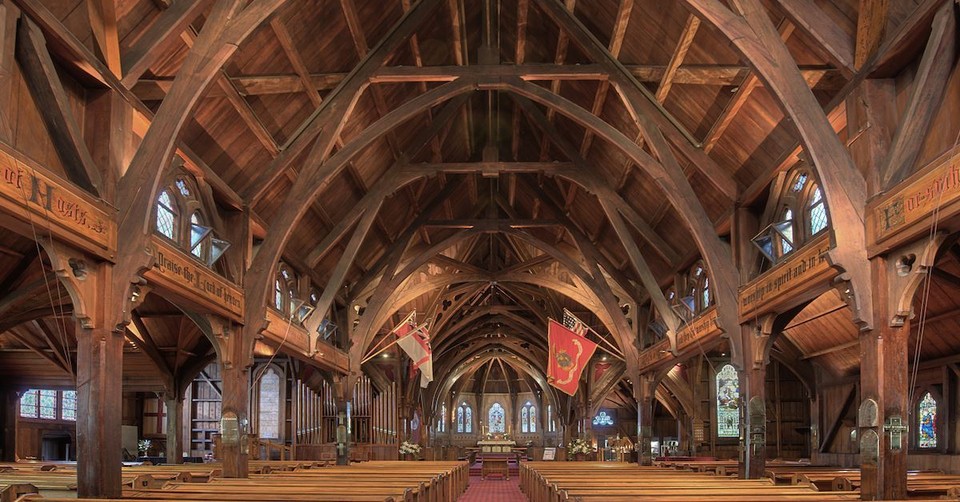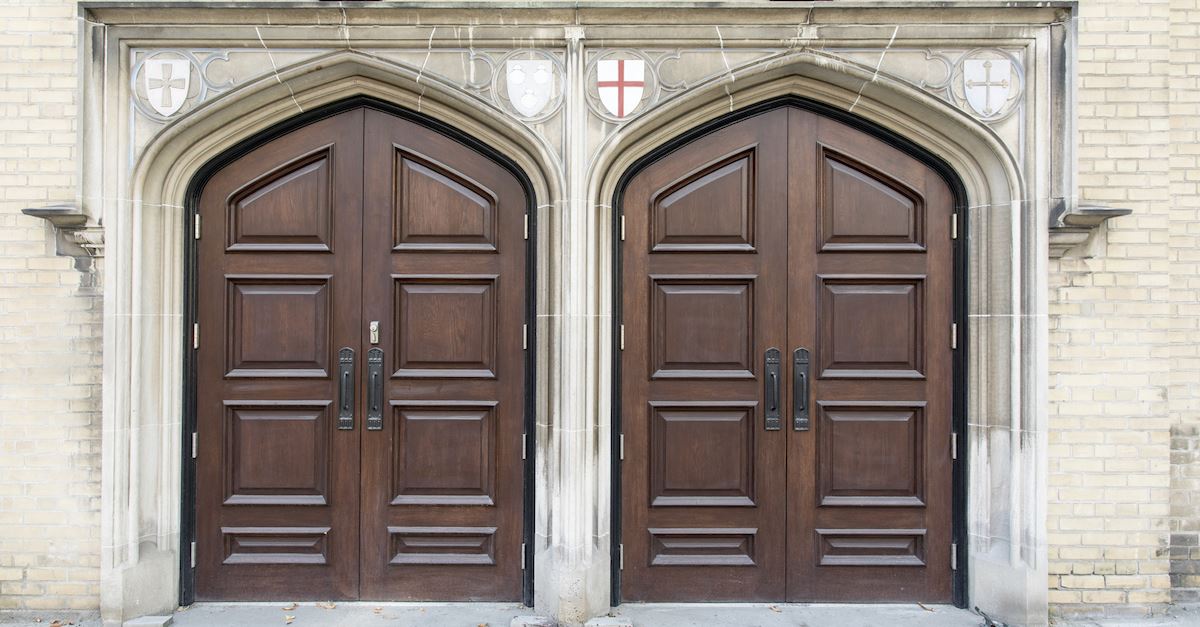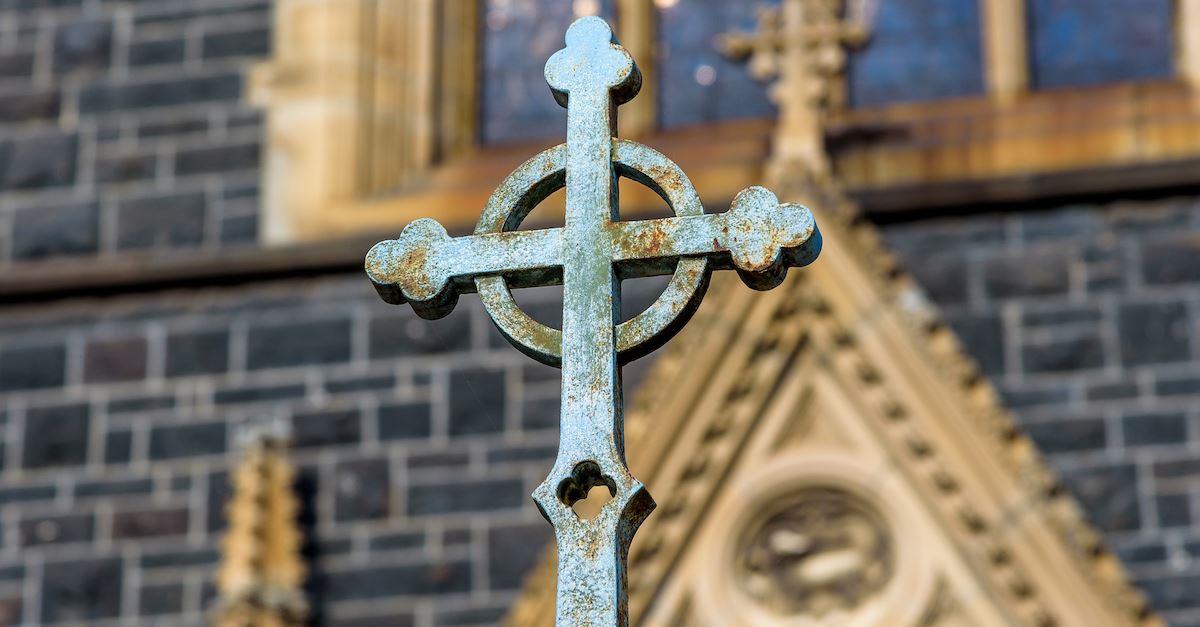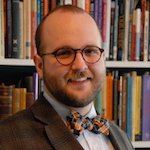The Anglican Church: 10 Things Christians Should Know

The Anglican Church, which stems from the Protestant Reformation, is one of the most prominent Christian traditions in the world. Moreover, its adherents have often exerted tremendous social and cultural influence, particularly in English-speaking countries. Anglicanism has also undergone many internal conflicts as of late, which have made the news. So, where did the Anglican church come from, what do Anglicans believe, and how do they live as Christians today?
Here are ten things to know about the Anglican Church, its history, and its influence in the world:
1. How the Anglican Church Came to Be
Christianity has been present in the British Isles since at least the third century. The British church produced great missionaries such as St. Patrick and St. Columba. It was not until 664 AD that the Church in Britain consolidated and submitted to the bishop of Rome (the Pope) at the Synod of Whitby. The Church of England and the Church of Rome separated in the 1500s during the Protestant Reformations. The English Reformation was reasonably conservative, much like the Lutheran reforms. Both Lutheranism and Anglicanism kept more features and practices from the past than other types of Protestantism, such as vestments, the historic church calendar, and robust liturgical worship.
The political reason for the separation of England and Rome was “the King’s Great Matter.” King Henry VIII of England had married his brother’s widow, Catherine of Aragon, receiving a special dispensation to do so from the Pope. The couple failed to produce a male heir for the throne, threatening England with yet another civil war (they had just recently concluded the War of the Roses). Henry VIII thought this was a sign of divine judgment against him for disobeying Leviticus 18:16. In 1527, King Henry appealed to Pope Clement VII to annul the marriage. An annulment means that the marriage wasn’t valid in the first place, and thus both spouses are released from matrimonial vows.
The Pope declined, his predecessor having already granted Henry the special dispensation for his current marriage. Of course, the Holy Roman Emperor Charles V was the nephew of Catherine, and the pope feared the political consequences of granting the annulment. However, Henry continued to press his case. Taking a suggestion from the theologian Thomas Cranmer, Henry sought advice from the universities of Europe to discern whether an annulment was warranted. Cranmer’s instincts were right; the scholars of Europe believed Henry and Catherine’s marriage should have never occurred in the first place. Cranmer was made the Archbishop of Canterbury (highest-ranking bishop in the Church of England) in 1532, declared the marriage “invalid” in 1533, and became the first Protestant Archbishop of Canterbury when the king removed England from the Pope’s jurisdiction in 1534.
2. The Origins of the Book of Common Prayer
King Henry was no friend of Protestant theology. His refutations against it had won him the title “Defender of the Faith” from the Pope. Nevertheless, Cranmer and other like-minded Protestant churchmen worked slowly and deliberately to achieve reform in England. They were able to accelerate their pace after Henry died and his young son, Edward VI, came to the throne. Perhaps one of the most important breakthroughs was the Book of Common Prayer, a collection of services and other essential resources for the Church of England. One of the main challenges for other Protestants is understanding how the Anglicans' prayers and liturgies inform and establish their theology. As such, the Prayer Book is a fundamental aspect of Anglicanism. Another important document was the 42 Articles of Religion, which outlined the confessional commitments and concerns of the reformed Church of England. These were written to avoid religious controversies and keep all Englishmen in the same church, free from Roman Catholicism and the Radical Reformation extremes.
It is important to remember that the English Reformation was a long one. Arguably, Anglicanism did not come into its own theologically until 1662. During this over-century-long period, it was “killed twice.” The first time was when King Edward died and was succeeded by his Roman Catholic half-sister, Mary. Called “Bloody Mary” by Protestants, she executed many clergymen, including Archbishop Thomas Cranmer himself. Her Protestant half-sister Queen Elizabeth I succeeded Mary, who provided much-needed political and theological stability during her long reign. Queen Elizabeth worked hard to keep her clergy in line, especially those who had fled to Geneva during the Marian persecutions and desired to “purify” the Church of England along the lines of the Genevan model. These became known as the Puritans.
3. Queen Elizabeth & The Church of England
It was during Elizabeth’s reign that the Articles of Religion were reduced and combined into what is now called the 39 Articles, and the Anglican theologian Richard Hooker wrote his seminal magnum opus, The Laws of Ecclesiastical Polity, which defended the normative principle of worship and other tenets of the Church of England from Puritan criticisms. The normative principle says that it may be used as long as a practice does not contradict Scripture but is consistent with scriptural worship. It opposes the regulative principle, which says that the public worship of God should include only those elements which are explicitly instituted or appointed by a command in the Bible.
After Elizabeth I came James I. Under his reign, Anglican scholars and clergymen translated the Authorized Version of the Bible. In an ironic twist of history, the King James Version of the Bible has become a hallmark of Fundamentalist Baptists, even though it is the product of the established Church of England (including input from several bishops, particularly Lancelot Andrewes). James I was succeeded by his son, King Charles I. He came into open conflict with the Puritans and Parliament, resulting in the English Civil War.
4. The Second Death & Restoration of Anglicanism
When the Royalist “Cavaliers” lost to the Puritan “Roundheads,” Anglicanism experienced its “second death.” Charles I was executed, as was the Archbishop of Canterbury William Laud. Episcopal church government was removed in favor of a more presbyterian model, and the Prayer Book was banned, all led by the Puritan Westminster Assembly (which produced the now-famous Westminster Standards that still exert influence in Reformed theology). This group favored the regulative principle of worship over the normative principle, banning certain vestments and the traditional church calendar (including celebrations of Christmas and Easter). Oliver Cromwell provided political leadership to England as Lord Protector, essentially acting as a dictator.
Episcopal church government, the 39 Articles, the Book of Common Prayer, the normative principle of worship, and other key features of Anglicanism were reinstated after the Restoration of the Monarchy under King Charles II. Certain Puritans were expulsed by the 1662 Act of Uniformity, going on to become either English Presbyterians, Congregationalists, or Baptists. A new edition of the Prayer Book was published in 1662 as well, becoming the most influential and longest-lasting edition of the text. By 1662, Anglicanism had been more or less stabilized theologically, and it entered a chapter of great expansion thanks to mission work and British colonialism.

5. What Anglicans Believe Today
Anglicans hold the Holy Bible, as contained in the 66 Books of the Old and New Testaments, to be the highest and supreme authority in matters of faith. It contains all things necessary for salvation, “that whatsoever is not read therein, nor may be proved thereby, is not to be required of any man, that it should be believed as an article of the Faith, or be thought requisite or necessary to salvation” (39 Articles of Religion). Anglicans also read the Apocrypha “for example of life and instruction of manners,” not to establish doctrine.
Anglicans confess the three great Creeds: Apostles’, Nicene, and Athanasian. They also espouse the doctrines of the ecumenical councils, emphasizing the first four in particular. Some of their more unique positions can be found in the historic Anglican Formularies: the Book of Common Prayer, the 39 Articles of Religion, and the Ordinal (which contains ordination services for bishops, priests, and deacons), with the Book of Homilies (an officially-approved collection of sermons) offering commentary on those formularies.
As their history makes clear, Anglicans uphold the episcopal form of church government. This means they recognize three pastoral offices: bishops (the term “bishop” is an English contraction of the biblical Greek word episkopos, often translated as “overseer” in modern Protestant translations of the New Testament), priests (the English contraction of presbyter or “elder”), and deacons (derived from the Greek, meaning servant, minister, or messenger).
6. Anglican Sacraments
Anglicans recognize two dominical sacraments established by Jesus Christ Himself: Holy Baptism and Holy Communion. They understand the sacraments as visible, effectual signs of grace and God’s good will toward His people, which enliven, strengthen, and confirm their faith in Him.
Anglicans also practice five other “sacramentals” or lesser sacraments:
- Confirmation (Acts 8:14-17)
- Penance (John 20:22-23)
- Ordination (Acts 6:6, 1 Timothy 4:14, 5:22, 2 Timothy 1:6, Titus 1:5)
- Matrimony (Ephesians 5:22-33)
- Unction of the Sick (James 5:14)
Anglicanism espouses the doctrine of baptismal regeneration, where, normatively, the Holy Spirit brings about a new birth in the waters of baptism. In this, classical Anglicans often see regeneration and conversion as different, though complementary, phenomena. As for their doctrine of eucharistic presence, Anglicans believe in a real spiritual presence in which God’s people are caught up into the heavens by the Holy Spirit to feed on the Body and Blood of Christ by faith. This view falls more in line with Reformed beliefs about the Eucharist rather than Lutheran sacramental presence. It certainly conflicts with Roman Catholic transubstantiation as well as “memorialist” views in which the Lord’s Supper is a purely symbolic commemoration of Jesus and His sacrifice on the cross.
7. The Parties and “Flavors” of Anglicanism
Anglicanism is host to several “parties” within her ranks that have different emphases, preferences, and agendas. Old High Churchmen prize the episcopate, traditional Anglican liturgy, and the Church’s authority in teaching, interpreting, and guarding Holy Writ. Anglo-Catholics emphasize beautiful ceremonies, the sacramental life of Christianity, and the continuity of ancient catholic (universally Christian) practices and doctrines.
Low Churchmen—also called Evangelical Churchmen—champion Reformational doctrine and pragmatic outreach. There can be a more Puritan expression of low churchmanship and a more revivalistic expression found in the likes of George Whitefield, the Wesley brothers, and the early Methodists.
The Broad Churchmen, also called the Latitudinarians, emphasize the breadth or comprehensiveness of the Anglican tradition, trying to allow as many Christians as possible to be members of Anglican churches in good conscience. Some of the first theological liberals in Anglicanism emerged from this approach, who downplayed orthodox Christian doctrines and ethics.
These various approaches can sometimes be dizzying for outsiders. Like other traditions, Anglicanism also faces a crisis of “cafeteria” Christianity. With this individualist mindset, members pick and choose what beliefs and behaviors suit their preferences, even if this goes against authoritative confessional documents. This has led to no small amount of confusion and conflict.
8. The Anglican Life
Anglicanism is a way of being a Christian. Prayer is at the heart of Anglican life, particularly via the Daily Offices of Morning and Evening Prayer. These two services were derived from monastic prayer offices by Thomas Cranmer, giving Anglicanism a distinct Benedictine flavor. The Daily Offices, along with regular Holy Communion and private devotion, make up the “rule” of Anglican life. Morning and Evening Prayers can be said or sung. When the Evening Prayer is chanted, it is called “Evensong.”
In the daily prayer offices, which can be practiced congregationally or at home, Anglicans read through the Bible on a scheduled plan, called a lectionary. The traditional Anglican lectionary goes through most of the Old Testament and parts of the Apocrypha once a year, the entirety of the New Testament thrice a year, and the Psalter once a month. Many other lectionaries now in use within the Anglican world do not accomplish this.
Anglicanism has also featured a strong missionary spirit from its very beginning. Whether it was monastic missionaries from the British Isles during the early medieval times or courageous modern missionaries who brought the Gospel to Africa, Asia, Australia, and the Americas, healthy Anglicanism has almost always practiced effective evangelism. The fruits of missional Anglicanism can be clearly seen as Anglican churches continue to spring up and grow throughout the Global South.
9. The Anglican Realignment
The conflict between revisionist and orthodox doctrine within Anglicanism has come to a head in recent years, manifesting itself, particularly with regard to ethical stances on human sexuality. This is an international crisis since Anglicanism is a global Christian tradition with institutions that relate to one another through various official channels. The original way Anglicans related to one another internationally was by being members of the Anglican Communion. The Primates (highest-ranking bishops) of various Provinces (large geographical jurisdictions) meet together, with the Archbishop of Canterbury serving as a “first among equals.” Another critical “instrument of unity” for the Anglican Communion is the Lambeth Conference, where many bishops meet together to collaborate and consult among themselves on matters of importance. These institutions and practices continue on to this very day.
However, as western Anglicans adopted revisionist theology and ethics in the 20th century, more traditional Anglicans—particularly those in the Global South—have taken exception, meeting together at the Global Anglican Future Conference (GAFCON), which is led by its own council of primates. The GAFCON movement espouses traditional Christian doctrine and ethics. Some of its members are also members of the Anglican Communion and try to reform that institution. Others have split or are otherwise independent of the Anglican Communion and are working to spread and establish the Gospel without any institutional ties to Lambeth. All of these conflicts and activities are referred to as the Anglican Realignment.

10. The Anglican Church in North America
In the United States, The Episcopal Church (TEC) is in the Anglican Communion. The Anglican Church in North America (ACNA) is a member of GAFCON. ACNA was founded in 2009 by traditional Anglicans that departed from TEC, followed by acrimonious lawsuits and property disputes with the departing congregations and dioceses (some of which continue at the writing of this article). The ACNA isn’t made up of recently-departed Episcopalian groups alone. The Reformed Episcopal Church split from the Episcopal Church in 1873 and joined the ACNA as a sub-jurisdiction. In other words, the Realignment is not simply a matter of denominational division. It also includes elements of union and reunion.
Making things even more confusing is the separate Continuing Anglican movement, which left the Episcopal Church in the 1970s over the issues of the revisionist 1979 American Book of Common Prayer and the adoption of women’s ordination. These groups signed the Affirmation of St. Louis but suffered several splits in the following years. In recent years, there have been efforts on the part of several Continuing jurisdictions to reunite.
For both the ACNA and the Continuing Anglicans, members of these groups will call themselves “Anglicans” rather than “Episcopalians.” The term “Episcopalian” is now used for official members of TEC, at least in the United States. Nevertheless, Americans make up only a tiny fraction of Anglicans in the world.
Anglican Resources
For more information on the Anglican Church, please check out the resources below:
Anglican Church in North America

This article is part of our Denomination Series listing historical facts and theological information about different factions within and from the Christian religion. We provide these articles to help you understand the distinctions between denominations, including origin, leadership, doctrine, and beliefs. Explore the various characteristics of different denominations from our list below!
Catholic Church: History, Tradition & Beliefs
Jehovah's Witnesses & Their Beliefs
Mormons: The Church of Latter Day Saints & Their Beliefs
Baptist Church: History & Beliefs
Presbyterians: History & Beliefs
United Methodist Church: History & Beliefs
Seventh-Day Adventists & Their Beliefs
The Pentecostal Church: History & Beliefs
Photo credits in order of appearance: ©Thinkstock/kallista5, ©Thinkstock/GLYPHstock, ©Thinkstock/AdamCalaitzis

Originally published November 14, 2018.







